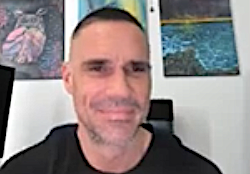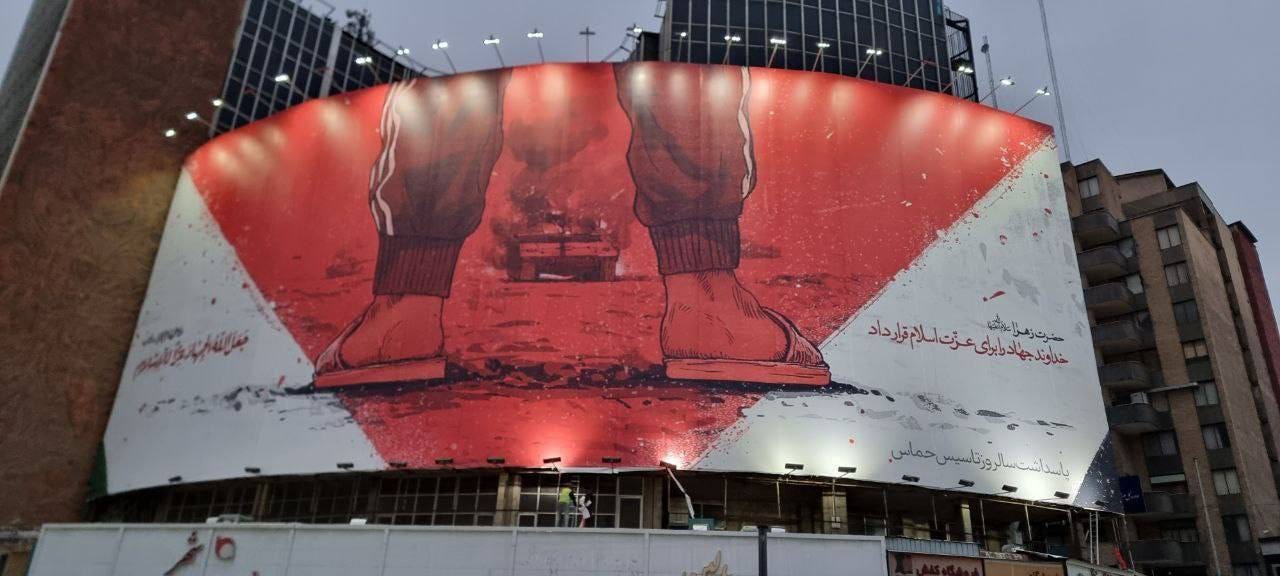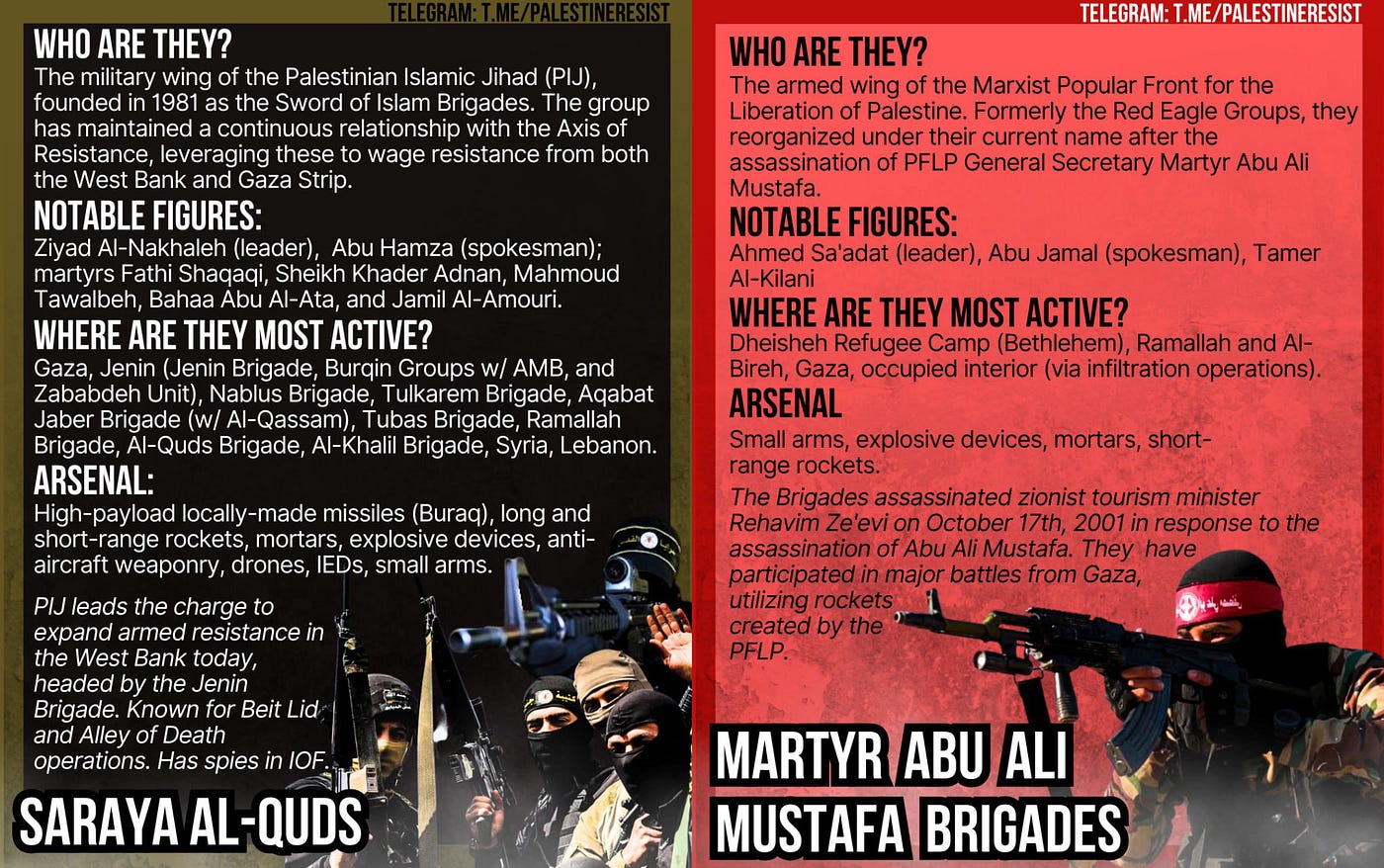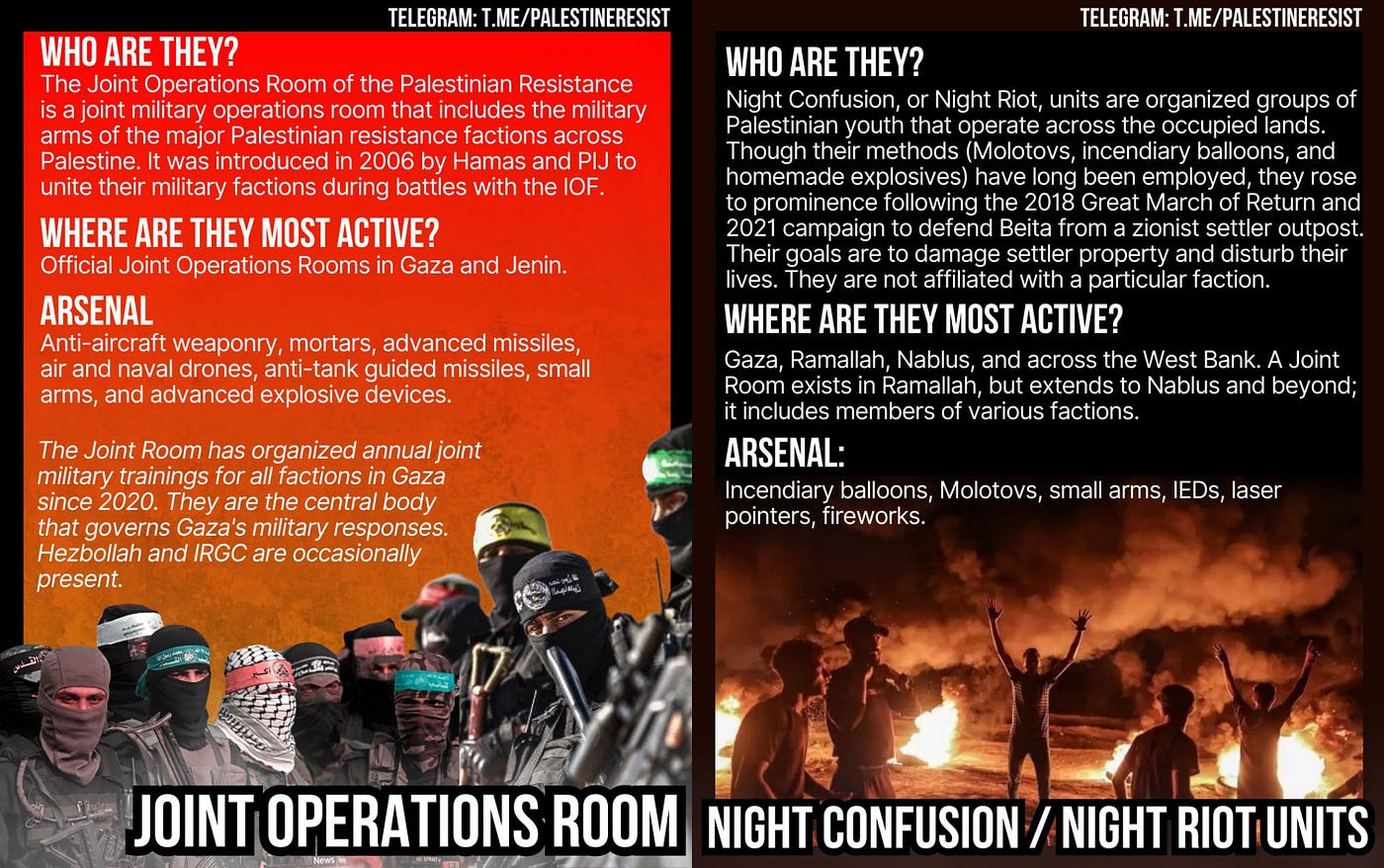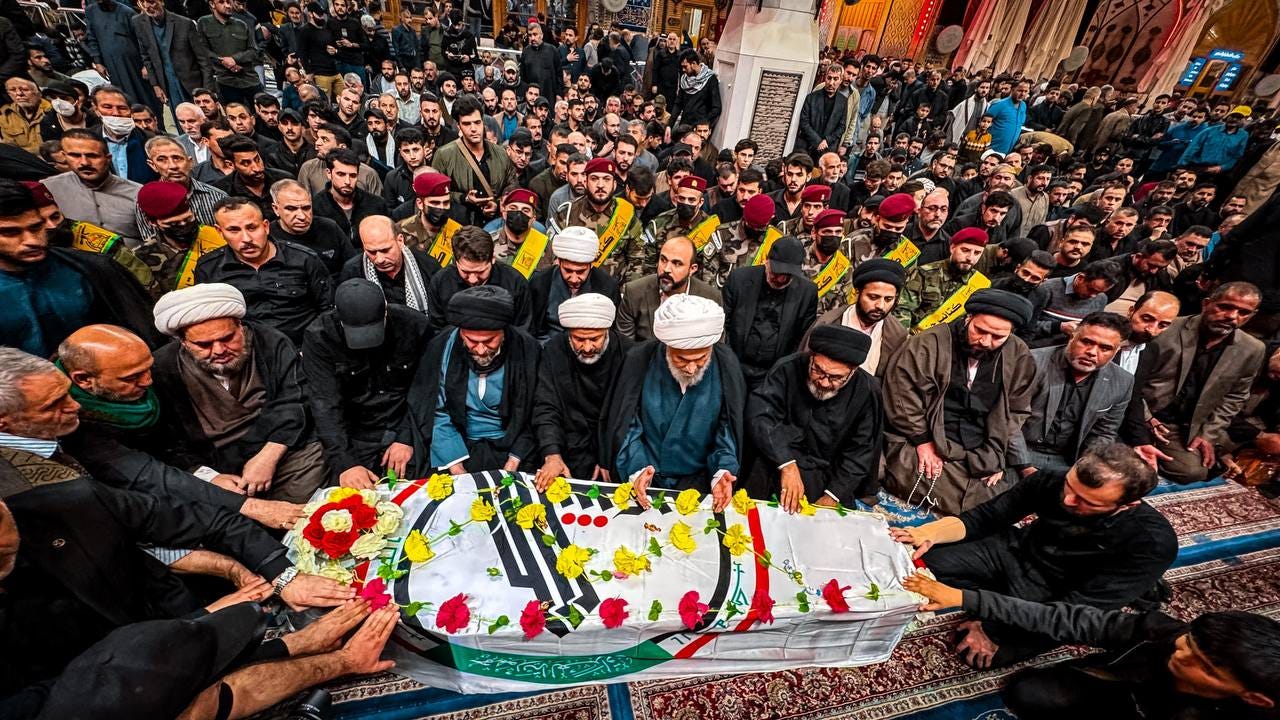|
Gabriel Rockhill is executive director of the Critical Theory Workshop/Atelier de Théorie Critique and professor of philosophy at Villanova University in Pennsylvania. He is currently completing his fifth single-author book, The Intellectual World War: Marxism versus the Imperial Theory Industry (Monthly Review Press, forthcoming). Zhao Dingqi is an assistant researcher at the Institute of Marxism, Chinese Academy of Social Sciences, and the editor of World Socialism Studies.
This interview was originally published in Chinese in the eleventh volume of World Socialism Studies in 2023. It has been lightly edited for MR.
|
Zhao Dingqi: During the Cold War, how did the U.S. Central Intelligence Agency (CIA) conduct the “Cultural Cold War”? What activities did the CIA’s Congress for Cultural Freedom carry out, and what impact did it have?
Gabriel Rockhill: The CIA undertook, along with other state agencies and the foundations of major capitalist enterprises, a multifaceted cultural cold war aimed at containing—and ultimately rolling back and destroying—communism. This propaganda war was international in scope and had many different aspects, only a few of which I touch on below. It is important to note at the outset, however, that in spite of its extensive reach and the ample resources dedicated to it, many battles have been lost throughout this war. To take but one recent example that demonstrates how this conflict continues today, Raúl Antonio Capote revealed in his 2015 book that he worked for the CIA for years in its destabilization campaigns in Cuba targeting intellectuals, writers, artists, and students. Unbeknownst to the governmental agency known as “the Company,” however, the Cuban university professor it had slyly honey-potted into promoting its dirty tricks was actually pulling one over on the cocksure master spies: he was working undercover for Cuban intelligence.1 This is but one sign among many others that the CIA, in spite of its various victories, is ultimately fighting a war that proves hard to win: it is attempting to impose a world order that is inimical to the overwhelming majority of the globe’s population.
One of the centerpieces of the cultural cold war was the Congress for Cultural Freedom (CCF), which was revealed in 1966 to be a CIA front.2 Hugh Wilford, who has researched the topic extensively, described the CCF as nothing short of one of the largest patrons of art and culture in the history of the world.3 Established in 1950, it promoted on the international scene the work of collaborationist academics such as Raymond Aron and Hannah Arendt over and against their Marxian rivals, including the likes of Jean-Paul Sartre and Simone de Beauvoir. The CCF had offices in thirty-five countries, mobilized an army of around 280 employees, published or supported some fifty prestigious journals around the world, and organized numerous art and cultural exhibitions, as well as international concerts and festivals. During its lifetime, it also planned or sponsored some 135 international conferences and seminars, working with a minimum of 38 institutions, and it published at least 170 books. Its press service, Forum Service, broadcast, free of charge and all over the world, reports from its venal intellectuals in twelve languages, which reached six hundred newspapers and five million readers. This vast global network was what its director, Michael Josselson, called—in an expression reminiscent of the Mafia—“our big family.” From its Paris headquarters, the CCF had at its disposal an international echo chamber to amplify the voice of anticommunist intellectuals, artists, and writers. Its budget in 1966 was $2,070,500, which corresponds to $19.5 million in 2023.
Josselson’s “big family” was, however, just a small part of what Frank Wisner of the CIA called his “mighty Wurlitzer”: the international jukebox of media and cultural programming controlled by the Company. To take but a few examples of this gargantuan framework for psychological warfare, Carl Bernstein marshaled ample evidence to demonstrate that at least four hundred U.S. journalists worked surreptitiously for the CIA between 1952 and 1977.4 Following these revelations, the New York Times undertook a three-month investigation and concluded that the CIA “embraced more than eight hundred news and public information organizations and individuals.”5 These two exposés were published in establishment venues by journalists who themselves operated in the same networks they were analyzing, so these estimates were likely low.
Arthur Hays Sulzberger, the director of the New York Times from 1935 to 1961, worked so closely with the Agency that he signed a confidentiality agreement (the highest level of collaboration). William S. Paley’s Columbia Broadcasting System (CBS) was unquestionably the CIA’s greatest asset in the field of audiovisual broadcasting. It worked so intimately with the Company that it installed a direct phone line to CIA headquarters that was not routed through its central operator. Henry Luce’s Time Inc. was its most powerful collaborator in the weekly and monthly arena (including Time—where Bernstein later published—Life, Fortune, and Sports Illustrated). Luce agreed to hire CIA operatives as journalists, which became a very common cover. As we know from the Task Force on Greater CIA Openness, convened by CIA Director Robert Gates in 1991, these types of practices continued unabated after the revelations mentioned above: “PAO (Public Affairs Office) [of the CIA] now has relationships with reporters from every major wire service, newspaper, news weekly, and television network in the nation.… In many instances, we have persuaded reporters to postpone, change, hold, or even scrap stories.”6
The CIA also gained control of the American Newspaper Guild, and it became the owner of press services, magazines, and newspapers that it used as cover for its agents.7 It has placed officers in other press services, such as LATIN, Reuters, the Associated Press, and United Press International. William Schaap, an expert on governmental disinformation, testified that the CIA “owned or controlled some 2,500 media entities all over the world. In addition, it had its people, ranging from stringers to highly visible journalists and editors, in virtually every major media organization.”8 “We ‘had’ at least one newspaper in every foreign capital at any given time,” one CIA man told journalist John Crewdson. Furthermore, the source related, “those that the agency did not own outright or subsidize heavily it infiltrated with paid agents or staff officers who could have stories printed that were useful to the agency and not print those it found detrimental.”9 In the digital age, this process has of course continued. Yasha Levine, Alan MacLeod, and other scholars and journalists have detailed the extensive involvement of the U.S. national security state in the realms of big tech and social media. They have demonstrated, among other things, that major intelligence operators occupy key positions at Facebook, X (Twitter), TikTok, Reddit, and Google.10
The CIA has also deeply infiltrated the professional intelligentsia. When the Church Committee released its 1975 report on the U.S. intelligence community, the Agency admitted that it was in contact with “many thousands” of academics in “hundreds” of institutions (and no reform since has prevented it from pursuing or expanding this practice, as confirmed by the 1991 Gates Memo mentioned above).11 The Russian Institutes at Harvard and Columbia, like the Hoover Institute at Stanford and the Center for International Studies at MIT, were developed with direct support and oversight by the CIA.12 A researcher at the New School for Social Research recently brought to my attention a series of documents confirming that the CIA’s heinous MKULTRA project engaged in research at forty-four colleges and universities (at least), and we know that a minimum of fourteen universities participated in the infamous Operation Paperclip, which brought some 1,600 Nazi scientists, engineers, and technicians to the United States.13 MKULTRA, for those unfamiliar with it, was one of the Agency’s programs that engaged in sadistic brainwashing and torture experiments in which subjects were administered—without their consent—high doses of psychoactive drugs and other chemicals in combination with electroshocks, hypnosis, sensory deprivation, verbal and sexual abuse, and other forms of torture.
The CIA has also been deeply involved in the art world. For instance, it promoted U.S. American art, particularly Abstract Expressionism and the New York art scene, over and against Socialist Realism.14 It funded art exhibits, musical and theatrical performances, international art festivals, and more in a bid to disseminate what was touted as the free art of the West. The Company has worked closely with major art institutions in these endeavors. To take but a single telling example, one of the major CIA officers involved in the cultural cold war, Thomas W. Braden, was the Museum of Modern Art’s (MoMA) executive secretary before joining the Agency. MoMA’s presidents have included Nelson Rockefeller, who became the super-coordinator for clandestine intelligence operations and allowed the Rockefeller Fund to be used as a conduit for CIA money. Among MoMA’s directors, we find René d’Harnoncourt, who had worked for Rockefeller’s wartime intelligence agency for Latin America. John Hay Whitney of the eponymous museum and Julius Fleischmann sat on MoMA’s board of trustees. The former had worked for the CIA’s predecessor organization, the Office of Strategic Services (OSS), and allowed his charity to be used as a conduit for CIA money. The latter served as the president of the CIA’s Farfield Foundation. William S. Paley, the president of CBS and one of the major figures in U.S. psychological warfare programs, including those of the CIA, was on the members’ board of MoMA’s International Program. As this web of relations indicates, the capitalist ruling class works closely with the U.S. national security state in order to tightly control the cultural apparatus.
Many books have been written on the U.S. state’s involvement with the entertainment industry. Matthew Alford and Tom Secker have documented that the Department of Defense has been involved in supporting—with complete and absolute censorship rights—a minimum of 814 movies, with the CIA clocking in at a minimum of 37 and the FBI 22.15 Regarding TV shows, some of which have been very long running, the Department of Defense totals 1,133, the CIA 22, and the FBI 10. Above and beyond these quantifiable cases, there is, of course, the qualitative relationship between the national security state and Tinseltown. John Rizzo explained as much in 2014: “The CIA has long had a special relationship with the entertainment industry, devoting considerable attention to fostering relationships with Hollywood movers and shakers—studio executives, producers, directors, big-name actors.”16 Having served as the Deputy Counsel or Acting General Counsel of the CIA for the first nine years of the war on terror, during which time he was intimately involved in overseeing the global rendition, torture, and drone-assassination programs, Rizzo was well placed to understand how the culture industry could provide cover for imperial butchery.
These activities and many more reveal one of the primary features of the U.S. empire: it is a veritable empire of spectacles. One of its principal focal points has been the war for hearts and minds. To this end, it has established an expansive global infrastructure in order to engage in international psychological warfare. The near absolute control it exercises over mainstream media has been clearly visible in the recent drive to garner support for the U.S. proxy war against Russia in Ukraine. The same is true for its virulent 24/7 anti-China propaganda. Nevertheless, thanks to the work of so many valiant activists and the fact that it is working against reality itself, the empire of spectacles is incapable of completely controlling the narrative.17
ZD: You mention in one of your articles that CIA agents were keen on reading the French critical theories of Michel Foucault, Jacques Lacan, Pierre Bourdieu, and others. What is the reason for this phenomenon? How would you rate French Critical Theory?
GR: One important front in the cultural war on communism has been the intellectual world war, which is the topic of a book that I am currently completing for Monthly Review Press. The CIA has played a very significant role, but so have other governmental agencies and the foundations of the capitalist ruling class. The overall objective has been to discredit Marxism and undermine support for anti-imperialist struggles, as well as actually existing socialism.
Western Europe has been a particularly important battleground. The United States had emerged from the Second World War as the dominant imperial power. In order to try and exercise global hegemony, it was intent on enrolling the former leading imperialist powers in Western Europe as junior partners (as well as Japan in the East). However, this proved to be particularly difficult in countries like France and Italy, which had robust and vibrant communist parties. The U.S. national security state therefore launched a multipronged assault to infiltrate political parties, unions, organizations of civil society, and major news and information outlets.18 It even set up secret stay-behind armies, which it stocked with fascists, and made plans for military coups if the communists ever came to power through the ballot box (these armies were later activated in the post-1968 strategy of tension: they committed terrorist attacks against the civilian population that were blamed on communists).19
On the more explicitly intellectual front, the U.S. power elite supported the establishment of new educational institutions and international networks of knowledge production that were decidedly anticommunist in the hopes of discrediting Marxism. It provided uplift—meaning promotion and visibility—to intellectuals who were openly hostile to historical and dialectical materialism, while simultaneously running heinous slander campaigns against figures like Sartre and Beauvoir.20
It is within this precise context that French theory needs to be understood, at least partially, as a product of U.S. cultural imperialism. The thinkers affiliated with this label—Foucault, Lacan, Gilles Deleuze, Jacques Derrida, and many more—were associated in various ways with the structuralist movement, which largely defined itself in opposition to the most prominent philosopher of the preceding generation: Sartre.21 The latter’s Marxian orientation from the mid-1940s onward was generally rejected, and anti-Hegelianism—a shibboleth for anti-Marxism—became the order of the day. Foucault, to take but one telling example, condemned Sartre as “the last Marxist” and claimed that he was a man of the nineteenth century who was out of step with the (anti-Marxist) times, represented by Foucault and other theorists of his ilk.22
While some of these thinkers gained significant notoriety within France, it was their promotion in the United States that catapulted them into the international limelight and made them into required reading for the global intelligentsia. In a recent article in Monthly Review, I detailed some of the political and economic forces at work behind the event that is widely recognized as having inaugurated the era of French theory: the 1966 conference at Johns Hopkins University in Baltimore, which brought together many of these thinkers for the first time.23The Ford Foundation, which had been cofunding the CCF with the CIA and had many intimate ties to the Agency’s propaganda endeavors, funded the conference and other subsequent activities to the tune of $36,000 ($339,000 today). This is a truly extraordinary amount of money for a university conference, not to mention the fact that press coverage of the event was assured by Time and Newsweek, which is virtually unheard of in academic settings like these.24
The capitalist foundations, the CIA, and other governmental agencies were interested in promoting radically chic work that could serve as an ersatz for Marxism. Since they could not simply destroy the latter, they sought to foster new forms of theory that could be marketed as cutting edge and critical—though devoid of any revolutionary substance—in order to bury Marxism as passé. As we now know from a 1985 CIA research paper on the topic, the Agency was delighted with the contributions of French structuralism, as well as the Annales School and the group known as the Nouveaux Philosophes (New Philosophers). Citing in particular the structuralism affiliated with Foucault and Claude Lévi-Strauss, as well as the methodology of the Annales School, the paper draws the following conclusion: “we believe their critical demolition of Marxist influence in the social sciences is likely to endure as a profound contribution to modern scholarship.”25
Regarding my own evaluation of French theory, I would say that it is important to recognize it for what it is: a product—at least in part—of U.S. cultural imperialism, which seeks to displace Marxism by an anticommunist theoretical practice that indulges in bourgeois cultural eclecticism and mobilizes discursive pyrotechnics in order to create imagined revolutions in discourse that change nothing in reality. French theory rehabilitates and promotes, moreover, the work of anticommunists like Friedrich Nietzsche and Martin Heidegger, thereby attempting discreetly to redefine radical as radically reactionary. When French theorists do engage with Marxism, they transform it into one discourse among others, which can—and even should—be mixed with non-Marxist and antidialectical discourses like Nietzschean genealogy, Heideggerian Destruktion, Freudian psychoanalysis, and so forth. It is for this reason that many of these thinkers make a proprietary claim to “their own Marx,” which sometimes produces the illusion that they are somehow Marxist or Marxian. However, the overwhelming tendency is to extract arbitrarily from Marx’s work very specific elements that they presume resonate with their own philosophic brand. This is the case, for instance, with Derrida’s ghostly literary Marx of undecidability, Deleuze’s nomadic deterritorializing Marx, Jean-François Lyotard’s antidialectical Marx of the differend, and other such examples. Marx’s discourse thereby functions, for them, as fodder within the bourgeois canon that can be eclectically drawn upon to develop their own brand and give it an aura of capaciousness and radicality. Walter Rodney summed up the true nature of this theoretical practice when he explained that “with bourgeois thought, because of its whimsical nature, and because of the way in which it prompts eccentrics, you can have any road, because, after all, when you are not going any place, you can choose any road!”26
ZD: The Frankfurt School also has a wide influence in contemporary China. How would you rate the theories of the Frankfurt School? What kind of connection does it have with the CIA?
GR: The Institute for Social Research, colloquially known as the “Frankfurt School,” originally emerged as a Marxian research center at the University of Frankfurt that was bankrolled by a wealthy capitalist. When Max Horkheimer took over the directorship of the Institute in 1930, he oversaw a decisive shift toward speculative and cultural concerns that were increasingly distant from historical materialism and class struggle.
In this regard, the Frankfurt School under Horkheimer played a foundational role in the establishment of what is known as Western Marxism, and more specifically Cultural Marxism. Figures like Horkheimer and his lifelong collaborator Theodor Adorno not only rejected actually existing socialism, but they directly identified it with fascism by benightedly relying—very much like French theory—on the ideological category of totalitarianism.27 Embracing a highly intellectualized and melodramatic version of what would later become known as TINA (“There Is No Alternative”), they focused on the realm of bourgeois art and culture as perhaps the only potential site of salvation. This is because thinkers like Adorno and Horkheimer, with a few exceptions, were largely idealist in their theoretical practice: if meaningful social change was foreclosed in the practical world, deliverance was to be sought in the geistig—meaning intellectual and spiritual—realm of novel thought-forms and innovative bourgeois culture.
These high priests of Western Marxism not only embraced the capitalist ideological mantra that “fascism and communism are the same,” they also publicly backed imperialism. Horkheimer, for instance, supported the U.S. war in Vietnam, proclaiming in May 1967 that “In America, when it is necessary to conduct a war…it is not so much a question of the defense of the homeland, but it is essentially a matter of the defense of the constitution, the defense of the rights of man.”28 Although Adorno often preferred a professorial politics of quiet complicity over such bellicose statements, he did line up with Horkheimer in supporting the 1956 imperialist invasion of Egypt by Israel, Britain, and France, which sought to overthrow Gamal Abdel Nasser and seize the Suez Canal.29Calling Nasser “a fascist chieftain…who conspires with Moscow,” they openly condemned the countries bordering Israel as “Arab robber states.”30
The Frankfurt School’s leaders benefited handsomely from the support of the U.S. capitalist ruling class and national security state. Horkheimer participated in at least one of the major CCF conferences, and Adorno published articles in CIA-backed journals. Adorno also corresponded and collaborated with the leading figure in the German anticommunist Kulturkampf, the CIA’s Melvin Lasky, and he was included in CCF expansion plans even after it was revealed that it was a front organization. The Frankfurt frontmen also received extensive funding from the Rockefeller Foundation and the U.S. government, including to support the Institute’s return to West Germany after the war (Rockefeller contributed $103,695 in 1950, the equivalent of $1.3 million in 2023). They were, like the French theorists, doing the type of intellectual work that the leaders of the U.S. empire wanted to—and did—support.
It is also worth noting in passing that five of the eight members of Horkheimer’s inner circle at the Frankfurt School worked as analysts and propagandists for the U.S. government and national security state. Herbert Marcuse, Franz Neumann, and Otto Kirchheimer were all employed by the Office of War Information (OWI) before moving on to the Research and Analysis Branch of the OSS.* Leo Löwenthal too worked for the OWI, and Friedrich Pollock was hired by the Anti-Trust Division of the Department of Justice. This was a rather complex situation due to the fact that certain sectors of the U.S. state were keen on enlisting Marxian analysts in the fight against fascism and communism. At the same time, some of them took political positions that were compatible with U.S. imperial interests. This chapter of the history of the Frankfurt School therefore deserves much more scrutiny.31

Photo taken in Heidelberg in April 1964 by Jeremy J. Shapiro at the Max Weber Institute of Sociology. In front: Max Horkheimer and Theodor W. Adorno. Back left: Siegfried Landshut. Right back (hand in hair): Jürgen Habermas. Beware of intellectuals who overquote or are unduly impressed with "structuralists" or "postmodernists". (Wikimedia)
Finally, the evolution of the Frankfurt School into its second (Jürgen Habermas) and third generations (Axel Honneth, Nancy Fraser, Seyla Benhabib, and so on) did not alter in the least its anticommunist orientation. On the contrary, Habermas explicitly claimed that state socialism was bankrupt and argued for creating space within the capitalist system and its purportedly democratic institutions for the ideal of an inclusive “procedure of discursive will-formation.”32 The neo-Habermasians of the third generation have continued this orientation. Honneth, as I have argued in a detailed article that also engages with the other thinkers under discussion, has erected bourgeois ideology itself into the very normative framework for critical theory.33 Fraser indefatigably presents herself as the most left-wing of the critical theorists by positioning herself as a social democrat. However, she often remains rather vague when it comes to clarifying what this means in concrete terms, openly admitting that she has “a hard time defining a positive program.”34 The negative program is clear, however: “We know that it [democratic socialism] doesn’t mean anything like the authoritarian command economy, single-party model of Communism.”35
ZD: How do you understand the role and function of identity politics and multiculturalism, which are currently prevalent in the Western left?
GR: Identity politics, like the multiculturalism affiliated with it, is a contemporary manifestation of the culturalism and essentialism that have long characterized bourgeois ideology. The latter seeks to naturalize social and economic relations that are the consequence of the material history of capitalism. Rather than recognizing, for instance, that racial, national, ethnic, gender, sexual, and other forms of identity are historical constructs that have varied over time and result from specific material forces, these are naturalized and treated as an unquestionable foundation for political constituencies. Such essentialism serves to obscure the material forces operative behind these identities, as well as the class struggles that have been waged around them. This has been particularly useful to the ruling class and its managers as they have been forced to react to the demands of decolonization and of materialist antiracist and antipatriarchal struggles. How better to respond than with an essentializing identity politics that proposes false solutions to very real problems because it never addresses the material basis of colonization, racism, and gender oppression?
The self-proclaimed anti-essentialist versions of identity politics operative in the work of theorists like Judith Butler do not fundamentally break with this ideology.36 In purporting to deconstruct some of these categories by revealing them as discursive constructs that individuals or groups of individuals can question, play with, and re-perform, theorists working within the idealist parameters of deconstruction never provide a materialist and dialectical analysis of the history of the capitalist social relations that have produced these categories as major sites of collective class struggle. They also do not engage in the deep history of actually existing socialism’s fight collectively to transform these relations. Instead, they tend to draw on deconstruction and a practically dehistoricized version of Foucauldian genealogy to think about gender and sexual relations discursively, and they are at best oriented toward a liberal pluralism in which class struggle is replaced by interest-group advocacy.
By contrast, the Marxist tradition—as Domenico Losurdo has demonstrated in his magisterial work Class Struggle—has a profound and rich history of understanding class struggle in the plural. This means that it includes battles over the relationship between genders, nations, races, and economic classes (and, we could add, sexualities). Since these categories have taken on very specific hierarchical forms under capitalism, the best elements of the Marxist heritage have sought to both understand their historical provenance and radically transform them. This can be seen in the longstanding struggle against the domestic slavery imposed upon women, as well as the battle to overcome the imperialist subordination of nations and their racialized peoples. This history has played itself out in fits and starts, of course, and there is still much work to be done, in part because certain strains of Marxism—such as that of the Second International—have been tainted by elements of bourgeois ideology. Nevertheless, as scholars like Losurdo and others have demonstrated with remarkable erudition, the communists have been at the vanguard of these class struggles to overcome patriarchal domination, imperialist subordination, and racism by going to the very roots of these problems: capitalist social relations.
Identity politics, as it has developed in the leading imperialist countries and particularly the United States, has sought to bury this history in order to present itself as a radically new form of consciousness, as if communists had not so much as thought of the woman question or the national/racial question. Theorists of identity politics thus tend to assert arrogantly and benightedly that they are the first ones to address these issues, thereby overcoming an imagined economic determinism on the part of the so-called vulgar reductionist Marxists.37 Instead of recognizing these issues as sites of class struggle, moreover, they tend to use identity politics as a wedge against class politics. If they do make any gesture toward integrating class into their analysis, they generally reduce it to a question of personal identity, rather than a structural property relation. The solutions that they put forth therefore tend to be epiphenomenal, meaning that they focus on issues of representation and symbolism, rather than, for instance, overcoming the labor relations of domestic slavery and racialized superexploitation through a socialist transformation of the socioeconomic order. They are thereby incapable of leading to significant and sustainable change because they do not go to the root of the problem. As Adolph Reed Jr. has often argued with his signature biting wit, identitarians are perfectly happy to maintain extant class relations—including imperialist relations between nations, I would add—on the condition that there is the requisite ratio of representation of oppressed groups within the ruling class and the professional-managerial stratum.
In addition to helping displace class politics and analysis within the Western left, identity politics has made a major contribution to dividing the left itself into siloed debates around specific identity issues. Instead of class unity against a common enemy, it divides—and conquers—working and oppressed people by encouraging them to identify first and foremost as members of specific genders, sexualities, races, nations, ethnicities, religious groups, and so forth. In this regard, the ideology of identity politics actually is, at a much deeper level, a class politics. It is the politics of a bourgeoisie aimed at dividing the working and oppressed peoples of the world in order to more easily rule over them. It should come as no surprise, then, that it is the governing politics of the professional managerial class stratum in the imperial core. It dominates its institutions and informational outlets, and it is one of the primary mechanisms for career advancement within what Reed insightfully calls “the diversity industry.” It encourages everyone involved to identify with their specific group and advance their own individual interests by posing as its privileged representative. We should note, moreover, that wokeism also has the effect of driving some people into the arms of the right. If the dominant political culture encourages a clan mentality combined with competitive individualism, then it is unsurprising that white people and men have also—as a partial response to their perceived disenfranchisement by the diversity industry—advanced their particular agendas as “victims” of the system. Identity politics devoid of a class analysis is thus absolutely amenable to right-wing and even fascist permutations.
Finally, I would be remiss not to mention that identity politics, which has its recent ideological roots in the New Left and the social chauvinism V. I. Lenin had earlier diagnosed in the European left, is one of the principal ideological tools of imperialism. The divide-and-conquer strategy has been used to splinter targeted countries by fostering religious, ethnic, national, racial, or gender conflicts.38Identity politics has also served as a direct justification for imperialist intervention and meddling, as well as destabilization campaigns, if it be the purported causes of liberating women in Afghanistan, supporting Black rappers “discriminated” against in Cuba, backing purportedly “ecosocialist” Indigenous candidates in Latin America, “protecting” ethnic minorities in China, or other such well-known propaganda operations in which the U.S. empire presents itself as the benevolent benefactor of oppressed identities. Here we can clearly see the complete disconnect between the purely symbolic politics of identity and the material reality of class struggles insofar as the former can—and does—provide thin cover for imperialism. At this level as well, then, identity politics is ultimately a class politics: a politics of the imperialist ruling class.
ZD: Slavoj Žižek is a scholar who has had a wide influence in current global left-wing academic circles, and, of course, there are many controversies. Why do you see him as a “capitalist court jester”?39
GR: Žižek is a product of the imperial theory industry. As Michael Parenti has pointed out, reality is radical, meaning that working people in the capitalist world are faced with very real, material struggles for employment, housing, health care, education, a sustainable environment, and so forth. All of this tends to radicalize people, and many gravitate toward Marxism because it actually explains the world they are living in, the struggles they are facing, and it puts forth clear and actionable solutions. It is for this reason that the capitalist cultural apparatus has to deal with a very real interest in Marxism on the part of the working and oppressed masses. One tactic that it has developed, particularly for the target audiences of young people and members of the professional managerial class stratum, is to promote a highly commodified version of Marxism that perverts its fundamental substance. It thereby attempts to transform Marxism into a fashionable brand to be sold like any other commodity, rather than a collective theoretical and practical framework for emancipation from commodity-driven society.
Žižek is perfect for this project in many ways. He is an anticommunist native informant who grew up in the Socialist Federal Republic of Yugoslavia (SFRY). He regularly claims that his subjective experience as a petty-bourgeois intellectual who sought uplift for his career in the West somehow gives him a special right to testify to the true nature of socialism. Personal anecdotes regarding his experience in the SFRY thereby take the place of objective analysis. Unsurprisingly, for an opportunist looking for pelf and glory, Žižek experienced his socialist homeland as inferior to the Western capitalist countries that provided him with such uplift that he is now recognized as one of the top global thinkers by Foreign Policy magazine (a virtual arm of the U.S. State Department).
Žižek openly brags about the role that he personally played in dismantling socialism in the SFRY. He was the primary political columnist for a prominent dissident publication, Mladina, which the Yugoslav Communist Party accused of being backed by the CIA. He also cofounded the Liberal Democratic Party and ran as its presidential candidate in the first breakaway republic of Slovenia, promising that he would “substantially assist in the decomposition of ideologic Real-socialist apparatus of the state [sic].”40 Although he lost by a narrow margin, he openly supported the Slovenian state and its ruling party after the restoration of capitalism, and thus throughout the brutal process of capitalist shock therapy that led to a catastrophic decline in living standards for the majority of the population (but not for him—haha!). The pro-privatization party he cofounded was also clearly oriented toward integration into the imperialist camp, since it was the leading advocate for accession to the European Union and NATO.
I see this Eastern European liberal as capitalism’s court jester because he makes a laughingstock out of Marxism, and this is precisely why he has been so widely promoted by the dominant forces within capitalist society. Rather than a collective science of emancipation rooted in real material struggles, Marxism as he understands it is, above all, a provocative discourse of intellectual chicanery that boils down to the petty-bourgeois political posturing of an opportunist enfant terrible. His puckish antics and commie cosplay delight the bourgeoisie and capture the short attention spans of the uneducated. He is—like a jester—gifted at getting a rise or a laugh out of people, which easily translates into likes and hits in the digital age. He is also particularly good at hawking the wares of Hollywood and the bourgeois cultural apparatus in general. King capital obviously loves this trickster, who has lined his pockets in the process. Like any good jester, he knows the limits of courtly decorum and ultimately respects them by denigrating actually existing socialism, promoting capitalist accommodation, and often even directly supporting imperialism. If he is indeed the world’s “most dangerous intellectual,” as he is sometimes described by the bourgeois press, it is because he endangers the Marxist project of fighting imperialism and building a socialist world.
Confirming the well-established ratio between objective uplift and subjective rightward drift, Žižek has arguably become increasingly reactionary in his anticommunist support for imperialism. Consider his peremptory judgment regarding current efforts to challenge neocolonialism in Africa: “it is clear that the ‘anti-colonial’ uprisings in Central Africa are even worse than French neocolonialism.”41 In another recent public intervention, he provided a remarkably clear illustration of the type of revolution that he supports. Discussing the summer 2023 revolts in France in the wake of the police slaying of Nahel Merzouk, he drew on the important Marxist insight—as he often does for anything coherent that he claims—that uprisings will fail if there is not an organizational strategy that can bring them to victory. He then provided an example of a successful revolution: “Public protests and uprisings can play a positive role if they are sustained by an emancipatory vision, such as the 2013–14 Maidan uprising in Ukraine.”42 As has been widely documented, the Maidan uprising was a fascist coup d’état that was fomented and supported by the U.S. national security state.43 This means that he considers an imperialist-backed fascist coup, which Samir Amin referred to as a “Euro/Nazi putsch,” to be a “positive” example of an “emancipatory vision” that led to a successful revolution.44 This position, as well as his stalwart support for the U.S.-NATO proxy war in Ukraine, clarifies what it means to be the world’s “most dangerous intellectual”: he is a philo-fascist masquerading as a communist.
ZD: The United States has long been regarded by the West as a model of liberal democracy. But you think America was never a democracy.45 Can you explain your point of view?
GR: Objectively speaking, the United States was never a democracy. It was founded as a republic, and the so-called founding fathers were openly hostile to democracy. This is obvious from The Federalist Papers, the notes taken at the 1787 Constitutional Convention in Philadelphia, and the founding documents of the United States, as well as the material practice of governance that was originally established in the settler colony. As everyone knows, the Indigenous population of the United States, referred to as the “merciless Indian Savages” in the Declaration of Independence, was not given democratic power in the freshly minted republic, nor were enslaved people from Africa or women.46 The same is very much true of average white workers. As scholars like Terry Bouton have documented in detail: “most ordinary white men…did not think the [so-called American] Revolution ended with governments that made their ideals and interests the primary goal. To the contrary, they were convinced that the revolutionary elite had remade government to benefit themselves and to undermine the independence of ordinary folk.”47 After all, the Constitutional Convention did not establish direct popular elections for the president, the Supreme Court, or senators. The only exception was the House of Representatives. However, the qualifications were set by state legislatures, which almost always required property-holding as a basis for the right to vote. It is unsurprising, then, that progressive critics at the time pointed this out. Patrick Henry flatly stated regarding the United States: “It is not a democracy.”48 George Mason described the new constitution as the “most daring attempt to establish a despotic aristocracy among freeman, that the world has ever witnessed.”49
Although the term republic was widely used to describe the United States at the time, this began to shift in the late 1820s, when Andrew Jackson—also known as “Indian Killer” for his genocidal policies—ran a populist presidential campaign. He presented himself as a democrat, in the sense of an average U.S. American who would put an end to the rule of patricians from Massachusetts and Virginia. In spite of the fact that no structural changes were made to the mode of governance, politicians like Jackson and other members of the elite and their managers began using the term democracy to describe the republic, thereby insinuating that it served the interests of the people.50 This tradition has, of course, continued: democracy is a euphemism for oligarchic bourgeois rule.
At the same time, there have been two and a half centuries of class struggle in the United States, and democratic forces have often won very significant concessions from the ruling class. The realm of popular elections has been expanded to include senators and the president, even though the electoral college has yet to be abolished and Supreme Court justices are still appointed for life. The franchise has been extended to women, African Americans, and Native Americans. These are major gains that should, of course, be defended, expanded, and rendered more substantial through deep democratic reforms of the entire electoral and campaign process. However, as important as these democratic advances are, they have not altered the overall system of plutocratic dominion.
In a very important study based on multivariable statistical analysis, Martin Gilens and Benjamin I. Page demonstrated that “economic elites and organized groups representing business interests have substantial independent impacts on U.S. government policy, while average citizens and mass-based interest groups have little or no independent influence.”51 This plutocratic form of rule is not only operative domestically, of course, but also internationally. The United States has attempted to impose its antidemocratic form of business rule wherever it can. Between the end of the Second World War and 2014, according to William Blum’s sedulous research, it endeavored to overthrow more than fifty foreign governments, the majority of which had been democratically elected.52The United States is a plutocratic empire, not a democracy in any meaningful or substantive sense of the term.
I do recognize, of course, that expressions like bourgeois democracy, formal democracy, and liberal democracy are often used, for various reasons, to index this form of plutocracy. It is also true, and worth emphasizing, that the existence of certain formal democratic rights under plutocratic rule is a major victory for working people, whose importance should nowise be minimized. What we ultimately need is a dialectical assessment that accounts for the complexity of modes of governance, which include in the United States oligarchic control of the state and important rights that have been won through class struggle.
ZD: How do you evaluate the “free speech” advocated by the bourgeoisie? Does “free speech” really exist in the bourgeois world today?
GR: Bourgeois ideology seeks to isolate the question of free speech from that of power and property, thereby transforming it into an abstract principle governing the actions of isolated individuals. Such an approach endeavors to foreclose any materialist analysis of the means of communication and the all-important question of who owns and controls them. This ideology thereby shifts the entire field of analysis from the social totality to the abstract relationship between theoretical principles and isolated acts of individual speech.
One of the advantages of this approach is that someone can be given the abstract right to free speech precisely because they are devoid of the power to be heard. This is the condition of most people living within the capitalist world. In principle, they can express their individual views in any way that they would like. However, in reality, these opinions will be rendered largely irrelevant if they do not correspond to the vantage points that the owners of the means of communication would like to broadcast. They will simply not be given a platform. Since the ruling class has such awesome power over the means of communication that they have convinced many people that censorship does not exist, these views can even be openly suppressed or shadow-banned without the general public taking much notice.
If vantage points outside of the capitalist mainstream are able to gain a wide audience and begin building real power, then we know what the ownership class and the bourgeois state are capable of doing. They have a long history of scrapping any and all appeals to free speech in the name of destroying their class enemies and any infrastructure that supports the free circulation of their ideas. We could cite the Alien and Sedition Acts, the Palmer Raids, the Smith Act, the McCarran Act, the McCarthy era, or the “new” Cold War as examples. Since the beginning of the Russian special military operation in Ukraine, the world has been given an object lesson in the bourgeoisie’s near-total control of the means of communication within the United States. In addition to extensive censorship on YouTube and social media, particularly of Russia Today and Sputnik, all of the major media have marched in lockstep with their anti-Russia and anti-China propaganda, as well as the drumbeat for unquestioning support for the U.S. proxy war (though more recently some conservatives have come to see this as an opportunity to present themselves as somehow antiwar). The right to free speech advocated for by the bourgeoisie amounts to the freedom of the ruling class to own the means of communication so that they can freely decide whose views are worthy of amplification and wide dissemination, and whose can be marginalized or blanketed in silence.
ZD: You mentioned in one of your articles that “Fascist modes of governance are a very real and present part of the so-called liberal world order.”53 Why do you think so?
GR: In my research for a book, provisionally entitled Fascism and the Socialist Solution, I have been developing an explanatory framework that calls into question the dominant one-state-one-government paradigm. According to the received view, each state—if it is not in an open civil war—only has one mode of governance at a particular point in time. The problem with this nondialectical model can be easily seen in the so-called liberal bourgeois democracies of the West such as the United States.
As I have documented in an article on the topic, the U.S. government rehabilitated tens of thousands of Nazis and fascists in the wake of the Second World War.54 Many were given safe passage to the United States through operations like Paperclip and integrated into its scientific, intelligence, and military establishments (including NATO and NASA). Many others were incorporated into secret stay-behind armies across Europe, as well as into European intelligence networks and even the government (like Marshal Badoglio in Italy).55 Still others were channeled through ratlines to Latin America or elsewhere in the world. In the case of the Japanese fascists, they were largely put back in power by the CIA. They took over the Liberal Party and made it into a right-wing club for the erstwhile leaders of imperial Japan. This global network of seasoned anticommunists empowered by the U.S. empire has participated in dirty wars, coups d’état, destabilization efforts, sabotage, and terror campaigns. If it is true that fascism was defeated in the Second World War, primarily due to the monumental sacrifice of some twenty-seven million Soviets and twenty million Chinese, it is not at all the case that it was eliminated, including within so-called liberal democracies.
One might be tempted to say, as progressive liberal pundits sometimes claim, that the United States deploys fascist forms of governance abroad but maintains a democracy on the home front. However, that is not exactly true. Historical-materialist analysis, as I have argued in some of my work, always needs to take into account three heuristically distinct dimensions: history, geography, and social stratification. It is important, in this regard, to examine the entire population, not simply those who occupy the same class segment as the liberal pundits. Consider, for instance, the Indigenous population. Subjected to a genocidal politics of elimination and then sequestered on reservations controlled and overseen by the U.S. state, many—particularly the poorest—are still the target of racist police terror and are fighting for basic human and democratic rights.56 The same is true of segments of the poor and working-class African-American population, as well as immigrants. This is how we need to understand George Jackson’s trenchant critique of the United States as what he called “the Fourth Reich.”57 Certain parts of the population, namely the racialized poor and working class who are fighting for survival, are often primarily governed through state and para-state repression, not through a system of democratic rights and representation. Why, then, would we assume that they are living in a democracy? Lest we forget, moreover, the Nazis themselves saw in the United States the most advanced form of racial apartheid statecraft, and they explicitly used it as a model.58
The paradigm of multiple modes of governance is dialectical insofar as it is attentive to the class dynamics operative within capitalist society, and to the fact that the various elements of the population are not governed in the same way. Members of the professional-managerial class stratum in the United States, for instance, do enjoy certain democratic rights in the formal sense, and these can be successfully appealed to in various forms of legal class struggle. Those who are under the jackboot of capitalism as a superexploited population are often governed in a very different manner, particularly if they start organizing to get the jackboot off their neck, as was the case with the Dragon (as Jackson was known). They are subjected to police terror and vigilante violence, and their supposed rights are often trammeled indiscriminately, like the twenty-nine Black Panthers and sixty-nine American Indian activists killed by the FBI and the police between 1968 and 1976 (according to Ward Churchill’s calculations). Theorists like Jackson, who spent his adult life in prison and then was killed in suspicious circumstances, have had no trouble calling this fascism.
To understand how governance really functions under capitalism, it is important to take a fine-grained dialectical approach that is attentive to its different modes. So-called liberal democracy functions like the good cop of capitalism, promising rights and representation to compliant subjects. It is largely deployed to govern the middle- and upper middle-class strata, as well as those who aspire to them. The bad cop of fascism is unleashed on the poor, racialized, and discontent segments of the population, both domestically and abroad. It is obviously preferable to be governed by the good cop, and the defense and expansion of even limited forms of democracy are worthy tactical goals (particularly when compared to the horror of a complete fascist takeover of the state apparatus). However, it is strategically important to recognize that—just as in the case of a police interrogation—the good cop and the bad cop work together for the same state and with an identical goal: maintaining, even intensifying, capitalist social relations by using the carrot of bourgeois democracy or the stick of fascism.
ZD: Many people believe that the emergence of the “Trump phenomenon” means that the danger of fascism is rising. How do you feel about this point of view? How do you comment on the event of Donald Trump supporters storming the Capitol on January 6, 2021?
GR: Trump has emboldened fascist forces and encouraged their activities. He is an ultranationalist white supremacist and a rabid capitalist and imperialist.59 The Trump phenomenon is, however, a symptom of a larger crisis within the imperialist order. Due to the persistent development of a multipolar world, the rise of China, the failures of financialized neoliberalism, and the waning power of the leading imperialist states, fascism is very much on the rise across the capitalist world.
Within the U.S. context, Joe Biden’s presidential campaign for the 2020 election was largely organized around the idea that he was capable of saving the country from fascism because he would respect the peaceful transfer of power and the rule of law. It is certainly true that a bourgeois democracy is by far preferable to an open fascist dictatorship, and the struggle for the former over and against the latter is of the utmost importance. As corrupt, dysfunctional, and mendacious as bourgeois democracy tends to be, it does allow certain segments of the population an important margin of maneuver for organizing, political education, and building power. Nevertheless, it is a grave mistake to assume that the Democratic Party in the United States is a bulwark against fascism. In coming into office, Biden did not immediately take steps to put Trump in jail for seditious conspiracy, and the fascists on the ground have generally been treated with kid gloves (remarkably few have been charged with seditious conspiracy, and many of the sentences have been unusually light). It is only now, years after the event—and in the propagandistic lead-up to the 2024 presidential election—that some of the conspirators are facing prison time and Trump is being prosecuted on a number of fronts. Moreover, Biden’s administration has not moved seriously to roll back the U.S. police state, racist police violence, and the system of mass incarceration (which he helped build), nor has it taken significant steps toward dismantling fascist organizations and militias. While Scranton Joe has not vocally supported homegrown fascist movements like Trump, which is clearly a positive development, his team has pursued the U.S. imperialist agenda and aggressively supported the development of fascism in countries like Ukraine.60
Regarding the storming of the Capitol, this event was not simply a spontaneous uprising against the election of Biden. As I have documented in a detailed article on the topic, it was backed by a segment of the capitalist ruling class, and the highest levels of the U.S. government allowed it to happen.61 The Publix supermarket heir Julie Jenkins Fancelli provided around $300,000 for the Stop the Steal rally. The Trump family circle was also directly involved in financing the protest, for which it raised millions of dollars: “Trump’s political operation paid more than $4.3 million to Jan. 6 organizers.”62 Far from being a grassroots undertaking, then, this was an astroturfed operation. Moreover, there are very clear signs that the high command of intelligence services, the military, and the police allowed—at a minimum—the Capitol to be stormed. Anyone familiar with the draconian security measures in place for progressive protests at the Capitol recognized this immediately, simply based on the video footage and the fact that only one-fifth of Capitol Police were on duty that day and were ill-equipped for the widely anticipated riots. However, we now know that the Army’s high command was directly responsible for delaying the deployment of the National Guard, and agents from the Department of Homeland Security on standby near the Capitol were not mobilized. All of this, and much more, points to the complicity of the highest levels of the U.S. government in the sacking of the Capitol.
For anyone who has seriously studied the expansive history of psychological operations undertaken by the U.S. national security state, there are elements of January 6 that overlap with this history. To be clear, this does not mean that it was a conspiracy in the moronic sense peddled by the bourgeois media, such as that the people storming the Capitol were all in on it, or were paid actors, or something absurd of that sort. These operations are carried out on a “need-to-know” basis, meaning that in an ideal situation there are only a few people at the very top of chains of command who are witting accomplices. Beneath them, there are many who are unwitting and acting on their own. This creates a high level of unpredictability and thus fosters the desired appearance of spontaneous action from below, which provides cover for the decision-makers at the top.
A lot more needs to be known about the elite operators involved in funding, fostering, and allowing the storming of the Capitol. Until more information becomes available, as it likely will over time, we at least know that it has been an extremely useful event for the Biden administration. It allowed Sleepy Joe to stumble into office donning the surprising halo of the “savior of our democracy,” which has provided very thin cover for his moves to the right and the ruling class’s ongoing war on working people. Trump was almost immediately rehabilitated, rather than being put in jail. His administration’s media sock puppets—people like Tucker Carlson and Alex Jones—helped construct a woolly narrative, according to which he and his followers were victims of a terrible governmental conspiracy. Presenting himself as a freedom-loving renegade opposed to Big Government, he has set himself up for another presidential run as a so-called outsider. It is unclear how far the current prosecutions against him will go, but the timing is highly suspect, since they come a full three years after the fact, at a moment when the next presidential election cycle is revving up for another neck-and-neck horse race between two imperialist candidates.
ZD: For the global left today, how should we resist the ideological hegemony of the bourgeoisie? What kind of revolutionary theory should we construct?
GR: In the capitalist world, the ideological hegemony of the bourgeoisie is maintained by the breathtaking control that it exercises over the cultural apparatus, meaning the entire system of cultural production, distribution, and consumption. “Five gigantic corporations,” Alan MacLeod writes, “control over 90 per cent of what America reads, watches or listens to.”63 These megacorporations work closely with the U.S. government, as we briefly discussed above. Their overall goal was clearly stated by CIA Director William Casey at his first staff meeting in 1981: “We’ll know our disinformation program is complete when everything the American public believes is false.”64
These are the objective conditions of ideological struggle in a country like the United States. It is therefore naïve to think that we simply have to develop a correct analysis and share our individual views, convincing people through rational argumentation and conversation. To have any real traction, we have to work collectively, and we need to find ways of leveraging power in our favor. In a book that I am currently working on with Jennifer Ponce de León, which examines culture as a site of class struggle, we have heuristically distinguished between three different tactics. First, the Trojan Horse tactic consists in using the bourgeois cultural apparatus against itself by taking advantage of its extraordinary infrastructure to smuggle in—and thus disseminate widely—counterhegemonic messages (Boots Riley is a great example of someone who has successfully done this). A second important tactic is developing an alternative apparatus for the production, circulation, and reception of ideas. There are many important endeavors underway on this front, from alternative media and publications to educational platforms, cultural spaces, activist networks, and community centers. Ponce de Léon and I are both involved in the Critical Theory Workshop/Atelier de Théorie Critique, which is dedicated to this kind of work.65 Finally, there are the socialist apparatuses that have been developed in countries that have leveraged power away from the bourgeoisie. The news, information, and culture they are producing provide a real alternative to the capitalist cultural apparatus. To cite but two major examples in the Western hemisphere, Prensa Latina in Cuba and Telesur in Venezuela are doing incredibly important work.
Regarding the kind of revolutionary theory that we need, I could not agree more with Cheng Enfu. He has convincingly argued, following and further developing the work of many others, that Marxism is creative and regularly needs to be adapted to changing situations.66 Far from being a doctrine set in stone, it is what Losurdo has called a process of learning that changes with the times. In our current moment, there is much work to be done on this front. To highlight but three of the most pressing issues, we need to further develop revolutionary theory capable of both understanding and putting a halt to fascism, world war, and ecological collapse.67 Since I live and organize in the imperial core, I will add that it is also essential to develop revolutionary theory and practice in this specific region, which has thus far been impervious to seizures of state power.
Overall, the most important revolutionary theory is the one that assists in the complicated and difficult task of building socialism. There have been many surprises, and a lot has been learned since 1917. The global situation looks very different today than it did in the heyday of the Third International or during the so-called Cold War. Socialist countries are working together with capitalist countries intent on national development to build new international frameworks that push back against the imperial world order (BRICS+, the Belt and Road Initiative, the Shanghai Cooperation Organization, ASEAN, etc.). Recent uprisings across west and central Africa have challenged France’s neocolonial regime in the region and the prison of Western imperialism. Understanding and advancing these and other struggles for anticolonial liberation and the emergent multipolar world is a vital theoretical and practical task. At the same time, it is of the utmost importance to be able to elucidate how the contestation of the imperialist world order and the development of multipolarity can be stepping stones to the expansion of the socialist project. This is one of the most pressing issues of our day.
Footnotes
* Editors’ note: MR cofounder Paul M. Sweezy also worked for the Research and Analysis Branch of the OSS during the Second World War.
Notes
- ↩ See Raúl Antonio Capote, Enemigo (Madrid: Ediciones Akal, 2015).
- ↩ The information in this and the following paragraphs is compiled from multiple sources, including archival research, numerous Freedom of Information Act requests, and works such as Philip Agee and Louis Wolf, eds., Dirty Work: The CIA in Western Europe, 1st ed. (Dorset: Dorset Press, 1978); Frédéric Charpier, La C.I.A. en France: 60 ans d’ingérence dans les affaires françaises (Paris: Editions du Seuil, 2008); Ray S. Cline, Secrets, Spies, and Scholars (Washington, DC: Acropolis, 1976); Peter Coleman, The Liberal Conspiracy: The Congress for Cultural Freedom and the Struggle for the Mind of Postwar Europe (New York: The Free Press, 1989); Allan Francovich, On Company Business (documentary), 1980; Pierre Grémion, Intelligence de l’anticommunisme: Le Congrès pour la liberté de la culture à Paris, 1950–1975 (Paris: Librairie Arthème Fayard, 1995); Victor Marchetti and John D. Marks, The CIA and the Cult of Intelligence (New York: Dell Publishing Co., 1974); Frances Stonor Saunders, The Cultural Cold War (New York: The New Press, 2000); Giles Scott-Smith, The Politics of Apolitical Culture: The Congress for Cultural Freedom, the CIA and Post-War American Hegemony (New York: Routledge, 2002); John Stockwell, The Praetorian Guard: The U.S. Role in the New World Order (Boston: South End Press, 1991); Hugh Wilford, The Mighty Wurlitzer: How the CIA Played America(Cambridge, Massachusetts: Harvard University Press, 2008).
- ↩ See Wilford, The Mighty Wurlitzer.
- ↩ See Carl Bernstein, “The CIA and the Media,” Rolling Stone, October 20, 1977.
- ↩ John M. Crewdson, “Worldwide Propaganda Network Built by the C.I.A.,” New York Times, December 26, 1977.
- ↩ Task Force on Greater CIA Openness, memorandum for Director of Central Intelligence, Task Force Report on Greater CIA Openness, December 20, 1991, cia.gov.
- ↩ See Crewdson, “Worldwide Propaganda Network.”
- ↩ Quoted in William F. Pepper, The Plot to Kill King (New York: Skyhorse, 2018), 186.
- ↩ Crewdson, “Worldwide Propaganda Network.”
- ↩ See Yasha Levine, Surveillance Valley (New York: PublicAffairs, 2018) and Alan Macleod’s articles in MintPress News: “National Security Search Engine: Google’s Ranks Are Filled with CIA Agents,” July 25, 2022; “Meet the Ex-CIA Agents Deciding Facebook’s Content Policy,” July 12, 2022; “The Federal Bureau of Tweets: Twitter Is Hiring an Alarming Number of FBI Agents,” June 21, 2022; “The NATO to TikTok Pipeline: Why Is TikTok Employing so Many National Security Agents?,” April 29, 2022.
- ↩ The Church Committee Report was tightly controlled and overseen by the CIA itself, so it is highly likely that the numbers were and are much higher.
- ↩ See Noam Chomsky et al., The Cold War and the University (New York: The New Press, 1997); Sigmund Diamond, Compromised Campus: The Collaboration of Universities with the Intelligence Community, 1945–1955 (Oxford: Oxford University Press, 1992); Walter Rodney, The Russian Revolution: A View from the Third World, ed. Robin D. G. Kelley and Jesse Benjamin (London: Verso, 2018); Christopher Simpson, Science of Coercion: Communication Research and Psychological Warfare, 1945–1960 (Oxford: Oxford University Press, 1996).
- ↩ See The New School Archives, John R. Everett records (NS-01-01-02), Series 3. Subject files, 1918–1979, bulk: 1945–1979, Central Intelligence Agency (CIA), 1977–1978, findingaids.archives.newschool.edu/repositories/3/archival_objects/34220. A large collection of documents detailing some of the specifics is available at the Black Vault MKULTRA Collection, theblackvault.com.
- ↩ See Gabriel Rockhill, Radical History and the Politics of Art (New York: Columbia University Press, 2014).
- ↩ See Matthew Alford and Tom Secker, National Security Cinema: The Shocking New Evidence of Government Control in Hollywood (CreateSpace Independent Publishing Platform, 2017).
- ↩ Quoted in Alford and Secker, National Security Cinema, 49.
- ↩ See, for instance, Michel Collon and Test Media International, Ukraine: La Guerre des images (Brussels: Investig’Action, 2023).
- ↩ See Wilford, The Mighty Wurlitzer; Agee and Wolf, Dirty Work; Charpier, La C.I.A. en France.
- ↩ See Daniele Ganser, NATO’s Secret Armies (New York: Routledge, 2004) and Allan Francovich, Gladio (documentary), British Broadcasting Corporation, 1992.
- ↩ See Saunders, The Cultural Cold War and Hans-Rüdiger Minow, Quand la CIA infiltrait la culture (documentary), ARTE, 2006.
- ↩ The term poststructuralism is in many ways an Anglophone invention since, within the French context (at least originally) the so-called poststructuralists were seen as continuing and intensifying—granted, in slightly different ways—the structuralist project.
- ↩ Michel Foucault, Dits et écrits 1954–1988, vol. 1 (Paris: Éditions Gallimard, 1994), 542. For more on Foucault, see Gabriel Rockhill, “Foucault: The Faux Radical,” Los Angeles Review of Books, October 12, 2020, thephilosophicalsalon.com.
- ↩ See Gabriel Rockhill, “The Myth of 1968 Thought and the French Intelligentsia,” Monthly Review 75, no. 2 (June 2023): 19–49.
- ↩ See my foreword to Aymeric Monville, Neocapitalism According to Michel Clouscard (Madison: Iskra Books, 2023).
- ↩ Directorate of Intelligence, France: Defection of the Leftist Intellectuals, Central Intelligence Agency, December 1, 1985, 6, cia.gov.
- ↩ Walter Rodney, Decolonial Marxism: Essays from the Pan-African Revolution(London: Verso, 2022), 46.
- ↩ Much of the evidence for my comments can be found in the following articles: Gabriel Rockhill, “The CIA and the Frankfurt School’s Anti-Communism,” Los Angeles Review of Books, June 27, 2022, thephilosophicalsalon.com, and Gabriel Rockhill, “Critical and Revolutionary Theory: For the Reinvention of Critique in the Age of Ideological Realignment,” in Domination and Emancipation: Remaking Critique, ed. Daniel Benson (Lanham: Rowman and Littlefield Publishers, 2021), 117–61.
- ↩ Quoted in Wolfgang Kraushaar, ed., Frankfurter Schule und Studentenbewegung: Von der Flaschenpost zum Molotowcocktail 1946–1995, vol. 1, Chronik (Hamburg: Rogner and Bernhard GmbH and Co. Verlags KG, 1998), 252–53.
- ↩ On the Suez War, see Richard Becker, Palestine, Israel and the U.S. Empire(San Francisco: PSL Publications, 2009), 71–78.
- ↩ Quoted in Stuart Jeffries, Grand Hotel Abyss: The Lives of the Frankfurt School(London: Verso, 2016), 297. Adorno and Horkheimer’s statements on Nasser are of the same family as the propaganda produced by the Western media and intelligence agencies. As Paul Lashmar and James Oliver have convincingly argued, the Information Research Department—a secret anticommunist propaganda office closely tied to MI6 and the CIA—pressured the BBC and its other news assets to present Nasser as “a Soviet dupe,” which was “the favored all-purpose propaganda line for anti-colonial leaders” (Paul Lashmar and James Oliver, Britain’s Secret Propaganda War: 1948–1977 [Phoenix Mill, UK: Sutton Publishing Limited, 1998], 64).
- ↩ See Franz Neumann et al., Secret Reports on Nazi Germany: The Frankfurt School Contribution to the War Effort, ed. Raffaele Laudani, trans. Jason Francis McGimsey (Princeton: Princeton University Press, 2013); Barry M. Katz, Foreign Intelligence: Research and Analysis in the Office of Strategic Services, 1942–1945(Cambridge, Massachusetts: Harvard University Press, 1989); Tim B. Müller, Krieger und Gelehrte: Herbert Marcuse und die Denksysteme im Kalten Krieg(Hamburg: Hamburger Edition, 2010).
- ↩ Jürgen Habermas, The New Conservativism: Cultural Criticism and the Historians’ Debate, ed. and trans. Shierry Weber Nicholsen (Cambridge, Massachusetts: MIT Press, 1990), 69.
- ↩ See Rockhill, “Critical and Revolutionary Theory.”
- ↩ Nancy Fraser, “Capitalism’s Crisis of Care,” Dissent 63, no. 4 (Fall 2016): 35.
- ↩ Fraser, “Capitalism’s Crisis of Care,” 35.
- ↩ See Tita Barahona, “Judith Butler, la pope del ‘feminismo’ postmoderno, y su apoyo al capitalismo yanqui,” Canarias-semanal, April 7, 2022, canarias-semanal.org, and Ben Norton, “Postmodern Philosopher Judith Butler Repeatedly Donated to ‘Top Cop’ Kamala Harris,” December 18, 2019, bennorton.com.
- ↩ See, for instance, my critiques of Cinzia Arruzza, Tithi Bhattacharya, and Nancy Fraser in Rockhill, “Critical and Revolutionary Theory.”
- ↩ Stephen Gowans provides many excellent examples of this in his book Washington’s Long War on Syria (Montreal: Baraka Books, 2017).
- ↩ Gabriel Rockhill, “Capitalism’s Court Jester: Slavoj Žižek,” CounterPunch, January 2, 2023.
- ↩ See the televised 1990 election debate archived on YouTube: “Slavoj Žižek—1990 Election Debate in Slovenia,” YouTube video, 9:40, posted May 18, 2021, youtube.com/watch?v=942h8enHCZs.
- ↩ Slavoj Žižek, “Why the West Will Keep Losing in Africa: Neocolonialism Is Giving Birth to a Wretched Authoritarianism,” New Statesman, September 4, 2023.
- ↩ Slavoj Žižek, “The Left Must Embrace Law and Order,” New Statesman, July 4, 2023.
- ↩ See, for instance, Collon, Ukraine: La Guerre des images and Pepe Escobar, “Why the CIA Attempted a ‘Maidan Uprising’ in Brazil,” The Cradle, January 10, 2023, new.thecradle.co.
- ↩ Amin wrote: “The triad organized in Kiev what ought to be called a ‘Euro/Nazi putsch.’ The rhetoric of the Western medias, claiming that the policies of the Triad aim at promoting democracy, is simply a lie” (Samir Amin, “Contemporary Imperialism,” Monthly Review 67, no. 3 [July–August 2015]: 23–36).
- ↩ See Gabriel Rockhill, “The U.S. Is Not a Democracy, It Never Was,” CounterPunch, December 13, 2017.
- ↩ John Grafton, ed., The Declaration of Independence and Other Great Documents of American History 1775–1865 (Mineola, New York: Dover, 2000), 8. Also see Roxanne Dunbar-Ortiz, An Indigenous Peoples’ History of the United States (Boston: Beacon Press, 2015) and David Michael Smith, Endless Holocausts (New York: Monthly Review Press, 2023).
- ↩ Terry Bouton, Taming Democracy: “The People,” the Founders, and the Troubled Ending of the American Revolution (Oxford: Oxford University Press, 2007), 4.
- ↩ Ralph Louis Ketcham, ed., The Anti-Federalist Papers and the Constitutional Convention Debates (New York: Signet, 2003), 199.
- ↩ Herbert J. Storing, ed., The Complete Anti-Federalist, vol. 2 (Chicago: University of Chicago Press, 2008), 13.
- ↩ Although I have some issues with the overall framing, I provide much of the empirical evidence for my claims in the third chapter of this book: Gabriel Rockhill, Contre-histoire du temps présent: Interrogations intempestives sur la mondialisation, la technologie, la démocratie (Paris: CNRS Éditions, 2017). It is also available in English: Counter-History of the Present: Untimely Interrogations into Globalization, Technology, Democracy (Durham: Duke University Press, 2017).
- ↩ Martin Gilens and Benjamin I. Page, “Testing Theories of American Politics: Elites, Interest Groups, and Average Citizens,” Perspectives on Politics 12, no. 3 (September 2014): 564.
- ↩ See William Blum, Killing Hope: US Military and CIA Interventions Since World War II (London: Zed Books, 2014), as well as his “Overthrowing Other People’s Governments: The Master List” at williamblum.org.
- ↩ Gabriel Rockhill, “Liberalism and Fascism: The Good Cop and Bad Cop of Capitalism,” Black Agenda Report, October 21, 2020, blackagendareport.com.
- ↩ Gabriel Rockhill, “The U.S. Did Not Defeat Fascism in WWII, It Discretely Internationalized It,” CounterPunch, October 16, 2020.
- ↩ “Marshal Badoglio, a former collaborator of Benito Mussolini’s, who had been responsible for terrible war crimes in Ethiopia, was allowed to become the first head of government of post-fascist Italy. In the liberated part of Italy the new system looked suspiciously like the old one and was therefore dismissed by many as fascismo senza Mussolini, or ‘fascism minus Mussolini’” (Jacques R. Pauwels, The Myth of the Good War [Toronto: Lorimer, 2015], 119).
- ↩ See Dunbar-Ortiz, An Indigenous Peoples’ History of the United States and Smith, Endless Holocausts.
- ↩ George L. Jackson, Blood in My Eye (Baltimore: Black Classic Press, 1990), 9.
- ↩ See, for instance, James Q. Whitman, Hitler’s American Model (Princeton: Princeton University Press, 2018).
- ↩ See John Bellamy Foster, Trump in the White House: Tragedy and Farce (New York: Monthly Review Press, 2017).
- ↩ See Gabriel Rockhill, “Nazis in Ukraine: Seeing through the Fog of the Information War,” Liberation News, March 31, 2022, liberationnews.org.
- ↩ See Gabriel Rockhill, “Lessons from January 6th: An Inside Job,” CounterPunch, February 18, 2022.
- ↩ Anna Massoglia, “Details of the Money behind Jan. 6 Protests Continue to Emerge,” OpenSecrets News, October 25, 2021, opensecrets.org.
- ↩ Alan MacLeod, ed., Propaganda in the Information Age: Still Manufacturing Consent (New York: Routledge, 2019).
- ↩ Regarding its origin, see this discussion of this oft-quoted statement: Tony Brasunas, “Is the CIA Trying to Deceive All Americans?,” February 9, 2023, tonybrasunas.com.
- ↩ See criticaltheoryworkshop.com.
- ↩ See Cheng Enfu, China’s Economic Dialectic (New York: International Publishers, 2021).
- ↩ One of the most important Marxists in the United States, John Bellamy Foster, has been doing extremely important work on all three of these fronts.




